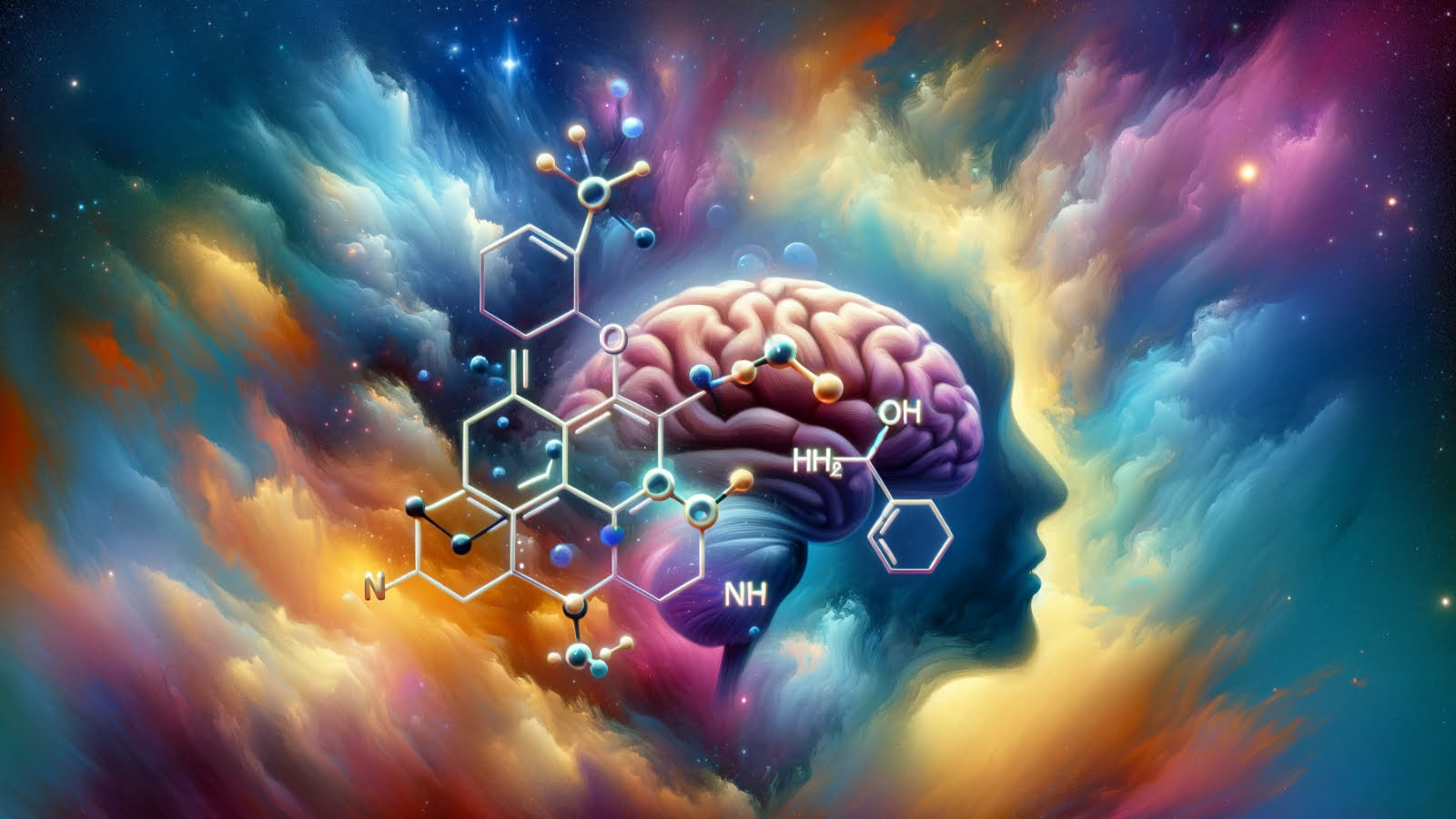Does Adderall Deplete Dopamine?

Does Adderall deplete dopamine?
Dopamine, a crucial neurotransmitter, plays an essential role in our brain functions. It influences mood, focus, and various cognitive abilities.
One of the substances known to affect dopamine production is Adderall – a prescription medication primarily used to treat attention deficit hyperactivity disorder (ADHD).
When consumed, Adderall stimulates the release of dopamine into the brain’s synapses. This immediate surge in dopamine levels leads to increased alertness and concentration.
However, frequent usage may potentially deplete these levels over time.
Understanding this interaction between Adderall and dopamine is critical for those using the medication regularly or considering its use.
Clarity about its effects can help individuals make informed decisions about their health and well-being.
Understanding the Effects of Adderall on Dopamine Levels
Adderall, a prescription medication, has a significant impact on the brain. It interacts with neurotransmitters, specifically dopamine and norepinephrine.(1)
This interaction occurs primarily in two brain regions: the prefrontal cortex and the nucleus accumbens.
- The prefrontal cortex is responsible for decision-making, impulse control, attention, and behavior regulation.
- The nucleus accumbens plays a crucial role in reward, pleasure, laughter, addiction, aggression, fear, and the placebo effect.
When Adderall enters these brain regions, it binds to dopamine transporter proteins and inhibits their function. This causes an increase in extracellular dopamine because reuptake into neurons is blocked.(2)
However, Adderall not only blocks dopamine reuptake but also stimulates its release.
It does this by triggering the activity of trace amine-associated receptor 1 (TAAR1). TAAR1 activation leads to increased firing of dopaminergic neurons, which results in more dopamine being released into synapses.
How Adderall Works in the Brain
Let’s take a closer look at what’s happening in our brains when using Adderall.
In essence:
- Adderall enters your system.
- It triggers TAAR1.
- TAAR1 increases dopaminergic neuron activity.
- More dopamine is released into synapses.
This process explains why people feel focused and alert when they use Adderall.
The surge of dopamine levels brought about by Adderall significantly impacts cognitive functions:
- Attention: Enhanced attention span makes it easier to focus on tasks without getting distracted.
- Motivation: Increased motivation can lead to improved productivity as tasks become more rewarding due to heightened dopamine levels.
- Memory: Some users may experience improvements in memory recall.
However, it’s important to note that while these effects might seem beneficial initially, long-term Adderall use can lead to dopamine depletion. This is because the brain starts to rely on the drug for dopamine release and reduces its natural production.
As a result, when the drug wears off, users may feel tired, depressed, or find it hard to concentrate – classic signs of low dopamine levels.(3)
Adderall and Dopamine Crashes
The term ‘dopamine crash’ is often associated with the aftermath of Adderall use. This phenomenon refers to a sudden drop in dopamine levels, leading to symptoms such as depression, fatigue, and irritability.
It’s primarily due to the way Adderall works on our brain’s neurotransmitters.
Adderall blocks the reuptake of these neurotransmitters by binding to their transporters (dopamine transporter & norepinephrine transporter) and inhibiting monoamine oxidase, an enzyme that breaks down dopamine and norepinephrine.
This action results in higher concentrations of these neurotransmitters in the synaptic clefts between neurons, leading to increased stimulation.
This ultimately improves attention span and reduces hyperactivity disorder symptoms – a significant benefit for those diagnosed with Attention Deficit Hyperactivity Disorder (ADHD).
However, this artificial elevation also means there’s a potential for a significant drop or ‘crash’ once the effect of Adderall wears off, leading to low dopamine levels.
Several factors can contribute to dopamine depletion over time:
- Adderall Misuse: Overuse or misuse of Adderall can lead to Adderall toxicity, which may disrupt the normal functioning of dopamine transporters, causing long-term damage.
- Dosage & Frequency: Higher doses or frequent use can accelerate the depletion rate as it forces your brain to produce more dopamine than it naturally would.
- Individual Physiology: Each person’s unique physiology can affect how they metabolize drugs like Adderall.
The Long-Term Impact of Adderall Use on Dopamine Levels
Adderall, when consumed in high quantities over an extended period, can lead to a dependency on the drug by the brain.
Over time, this dependence on external stimulation can cause the body to reduce its natural production of dopamine.
This leads to a state where normal functioning is impaired without the presence of the drug.
For instance:
- Decreased motivation
- Reduced ability to experience pleasure
- Difficulty concentrating
- Memory loss
There is also a direct correlation between dosage frequency and depletion rate.
Regular high-dose usage leads to a faster depletion of dopamine levels, leading to a higher risk of experiencing a ‘dopamine crash’.
It’s important to note that long-term dopamine depletion can lead to serious health issues, such as Parkinson’s disease and depression.
This is due to the critical role dopamine plays in regulating mood, reward, and movement.
Potential Risks and Side Effects
Adderall can cause a range of short-term side effects. These are mainly due to the elevated dopamine levels that Adderall induces in the brain.
Some common symptoms include:
- Increased heart rate
- High blood pressure
- Insomnia
- Dry mouth
- Loss of appetite
In high doses, or with misuse, these side effects can escalate into more serious issues such as panic attacks or even an overdose.
The long-term effects of Adderall use can be even more concerning.
Regular use of this drug can lead to dependency, making it difficult for users to stop without experiencing withdrawal symptoms like fatigue, depression, and disturbed sleep patterns.
Moreover, chronic use of Adderall has been linked to mental health issues. Studies have shown that long-term users may experience increased anxiety and mood swings.
In severe cases, misuse could potentially lead to psychosis.
Alternatives to Adderall
Some individuals are wondering how to avoid the dopamine crash that Adderall causes – and due to the issue, they have turned to over-the-counter alternatives to prescribed stimulant medication.
These supplements are helping hundreds of patients with ADHD effectively manage their symptoms and can also be taken with Adderall.
Nootropic supplements offer potent cognitive-enhancing effects, with fewer side effects than prescription medications.
To help you manage your ADHD symptoms and achieve optimal cognitive health without Adderall, here is a list of 4 popular alternatives to Adderall to consider:
- Vyvamind (Potent and Reliable): Vyvamind is rapidly gaining popularity as a top OTC natural Adderall alternative. This supplement is known for its potency, reliability, and safety profile. It was specifically formulated to mimic the main beneficial effects of Adderall, and includes natural nootropics like caffiene.(4) Vyvamind provides powerful neurostimulation, enhances neurotransmitter balance, and helps maintain brain cell health. Not only does it improve focus, but it also reduces stress and has fewer side effects compared to prescription drugs for ADHD.
- Nooceptin (Mimicking Amphetamine-Based Benefits): Nooceptin is an excellent option for individuals seeking a cognitive enhancer without the risks associated with amphetamine-based medications like Adderall. This natural alternative combines seven powerful nootropic supplements to improve cognitive performance and brain functioning abilities. One of its key ingredients, alpha glycerylphosphorylcholine,(5) is known to provide similar benefits to amphetamine-based drugs, such as improved focus and cognitive abilities.
- NooCube (Effective and Safe): NooCube is a potent nootropic and one of the best natural OTC Adderall replacement pills available. Its all-natural components aid in enhancing brain health and cognitive functioning. NooCube contains a blend of ingredients that have been carefully selected for their cognitive-enhancing properties. This supplement is widely regarded for its effectiveness and safety, making it a great alternative to Adderall.
- Mind Lab Pro (Top-notch Potency): Mind Lab Pro consistently ranks at the top of the “best Adderall alternatives” lists. This supplement stands out due to its top-notch potency, clean ingredients list, and extensive clinical research. Mind Lab Pro is designed to enhance cognitive performance and optimize brain function. It provides a comprehensive blend of ingredients that work synergistically to support memory, focus, and overall cognitive abilities.
Conclusion
Adderall’s interaction with the brain, particularly its effect on dopamine levels, is a critical aspect to consider. Long-term use can potentially lead to dopamine depletion and carry associated risks.
While it may be beneficial for those diagnosed with ADHD, understanding the potential impact on brain chemistry is essential. Always consult with a healthcare professional before starting or altering any medication regimen.
If you’re seeking alternatives to Adderall, there are options available that may pose fewer risks and side effects. It’s crucial to make informed decisions about your health and well-being.
Reach out to your healthcare provider today for guidance tailored to your individual needs.
- Weyandt, Lisa L et al. “Neurocognitive, Autonomic, and Mood Effects of Adderall: A Pilot Study of Healthy College Students.” Pharmacy (Basel, Switzerland) vol. 6,3 58. 27 Jun. 2018, doi:10.3390/pharmacy6030058 ↩
- Wagner, G C et al. “Amphetamine induces depletion of dopamine and loss of dopamine uptake sites in caudate.” Neurology vol. 30,5 (1980): 547-50. doi:10.1212/wnl.30.5.547 ↩
- Kohno, Milky et al. “Dopamine dysfunction in stimulant use disorders: mechanistic comparisons and implications for treatment.” Molecular psychiatry vol. 27,1 (2022): 220-229. doi:10.1038/s41380-021-01180-4 ↩
- Vázquez, Javier C et al. “Effects of Caffeine Consumption on Attention Deficit Hyperactivity Disorder (ADHD) Treatment: A Systematic Review of Animal Studies.” Nutrients vol. 14,4 739. 10 Feb. 2022, doi:10.3390/nu14040739 ↩
- Tamura, Yasuhisa et al. “Alpha-Glycerylphosphorylcholine Increases Motivation in Healthy Volunteers: A Single-Blind, Randomized, Placebo-Controlled Human Study.” Nutrients vol. 13,6 2091. 18 Jun. 2021, doi:10.3390/nu13062091 ↩
